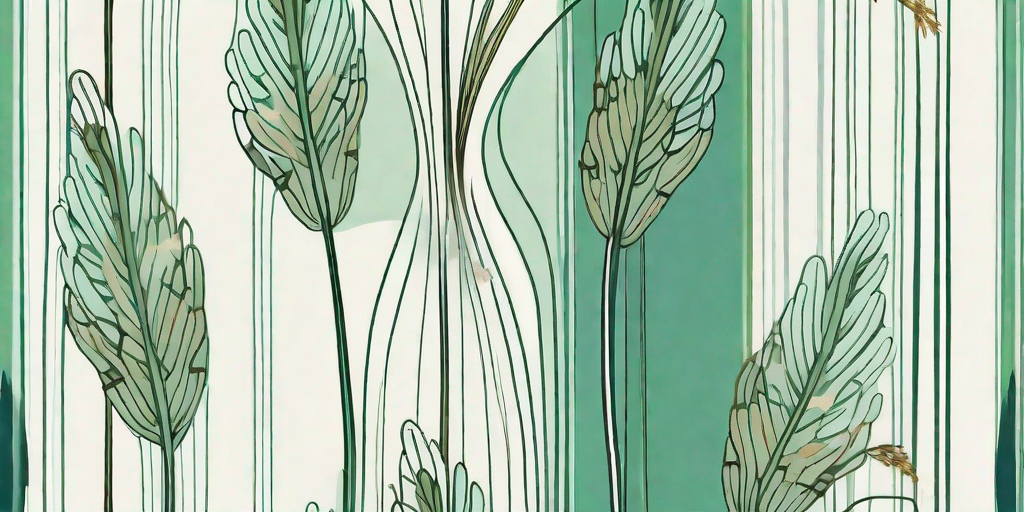
Northern Sea Oats, scientifically known as Chasmanthium latifolium, is a perennial grass that's as enchanting as its name suggests. With its unique, flat, oat-like seed heads that sway gracefully in the breeze, it's no wonder this ornamental grass has captured the hearts of many garden enthusiasts. But don't be fooled by its delicate appearance - this grass is as hardy as they come, and with the right care, it can be a stunning addition to your garden. So, buckle up, green thumbs, as we delve into the world of Northern Sea Oats.
Understanding the Charm of Northern Sea Oats
The Aesthetics
First things first, let's talk about the looks. Northern Sea Oats is a tall, upright grass that can reach heights of 2-5 feet. Its broad, bamboo-like leaves are a vibrant green in summer, turning a stunning copper in fall, and finally a straw color in winter. The real showstopper, however, are the seed heads. They hang from slender, arching stems and resemble flat oats, hence the name. These seed heads start off green, turning a beautiful bronze as they mature, and they persist through winter, adding interest to your garden when most other plants have called it a day.
But it's not just about the looks. Northern Sea Oats has a lovely rustling sound when the wind blows, adding a soothing, auditory element to your garden. It's like having your very own wind chime, courtesy of Mother Nature.
The Resilience
Now, let's talk about toughness. Northern Sea Oats is a native to North America, which means it's well adapted to a variety of conditions. It can handle full sun to part shade, and it's not picky about soil type. It's also drought-tolerant once established, and it's resistant to most pests and diseases. In other words, this is one tough cookie of a plant.
However, be warned - Northern Sea Oats can be a bit of a spreader. Its seeds are quite viable and can germinate in a variety of conditions. So, if you're not a fan of surprises in your garden, you might want to consider planting it in a container or using other methods to control its spread.
How to Grow and Care for Northern Sea Oats
Planting
When it comes to planting Northern Sea Oats, you have a couple of options. You can start from seeds, or you can plant divisions from mature plants. If you're starting from seeds, you'll want to sow them in early spring, after the danger of frost has passed. If you're planting divisions, you can do this in spring or fall.
Choose a location that gets full sun to part shade. Northern Sea Oats is adaptable to a variety of soil types, but it prefers a well-draining soil. Dig a hole that's twice as wide and just as deep as the root ball, place the plant in the hole, and backfill with soil. Water thoroughly after planting.
Caring
Once established, Northern Sea Oats is relatively low-maintenance. Water regularly during the first growing season to establish a deep, extensive root system. After that, it's drought-tolerant and will only need watering during extended dry periods.
As for fertilizing, a slow-release, balanced fertilizer applied in early spring should do the trick. Prune back the foliage in late winter or early spring before new growth begins.
FAQs about Northern Sea Oats
Is Northern Sea Oats invasive?
While Northern Sea Oats can spread through self-seeding, it's not considered invasive in most areas. However, it's always a good idea to check with your local extension service to make sure it's not a problem in your region.
Can Northern Sea Oats grow in containers?
Absolutely! In fact, growing Northern Sea Oats in containers can be a great way to control its spread. Just make sure to choose a container that's large enough to accommodate its growth.
Does Northern Sea Oats attract wildlife?
Yes, Northern Sea Oats is a great plant for attracting wildlife. Its seeds are a food source for birds, and its dense growth provides shelter for small animals.
Wrapping Up
So there you have it, folks - the lowdown on the lovely Northern Sea Oats. Whether you're a seasoned gardener or a greenhorn, this ornamental grass is sure to add a touch of charm to your garden. So why not give it a try? After all, who could resist the allure of those swaying seed heads?
Remember, gardening is a journey, not a destination. So take your time, enjoy the process, and don't be afraid to get your hands dirty. Happy gardening!















